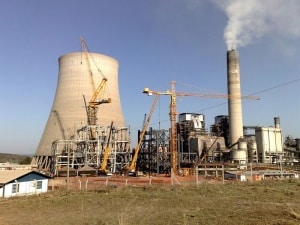The Energy Platform was updated this year, with four plants that won the last auctions. All use water to cool the system.
Through the Platform, it is possible to observe that three of the power plants added in this update are where the Quantitative Water Balance. Therefore, the capacity of water bodies is already worrying, critical or very critical.

Energy and Environment
The Energy Platform is an initiative of the Institute of Energy and the Environment (IEMA) with the aim of systematizing. Although it is to integrate information about thermoelectric power plants (UTEs) generating electricity in Brazil.
“The Plant Platform allows you to visualize how the UTEs are distributed in the territory and observe regions in which the impacts of the plants can accumulate, generating potentially significant risks”, says Vinicius de Sousa, from IEMA.
Through it, it is possible to locate each of the plants on the map along with information containing technical details of each project, water use indicators and annual electricity generation.
Carrying out this type of monitoring will be increasingly essential, as thermoelectricity is gaining greater importance in the electricity sector. This can be observed by analyzing the contracting of plants in the last generation auctions in which the new UTEs participated.
From December 2017 to date, 56% of the energy contracted in auctions comes from natural gas thermoelectric plants. Hydroelectric plants, on the other hand, accounted for less than 2%. This may indicate that, in the coming years, gas-fired thermal power plants should replace hydroelectricity as the main source of expansion of the electricity supply in the country.
Natural gas in combined cycle
In this scenario, it is essential that the assessment of the cumulative socio-environmental impacts of these power plants be properly considered in their locational planning. The four plants added recently use natural gas as fuel in a combined cycle. Therefore, it takes advantage of the heat from the output of the first turbine to produce more energy, and has a wet tower as a cooling system.
The platform also presents a diagram explaining how the thermoelectric conversion and its cooling work, which can be by means of water or air. Understanding these systems is important to determine what the water consumption by the plants will be, which directly impacts the availability of the resource on site.
According to the United Nations (UN), a person should have access to 20 liters of water per day. For example, using the information available on the Energy Platform, it is possible to estimate that the UTE Marlim Azul will consume around 78 liters per second of water (L/s). The municipality of Macaé, where this plant is located, already houses two other thermoelectric plants that together consume around 150 L/s.
Thus, with the operation of the new plant, thermoelectricity in the municipality will be responsible for almost 230 L/s. Although that is equivalent to 55% of all the water consumed in Macaé, according to data from the National Water Agency (ANA).
Although the region has a water balance (capacity of the local water bodies) considered comfortable, it is important to consider whether the allocation of such a significant part of its water resources. In short, for use in thermoelectric plants it makes sense for the municipality, considering the existence of other uses that may be a priority.


